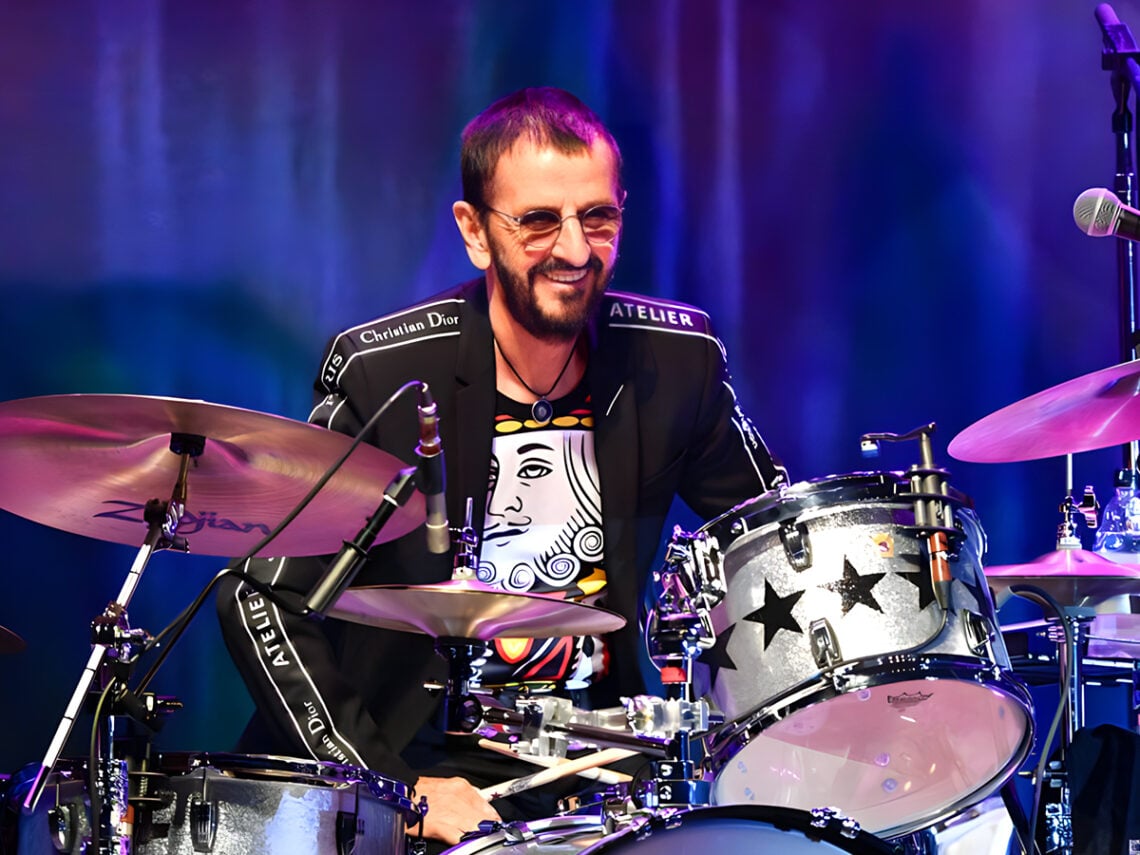
(Credits: Alamy)
Wed 1 October 2025 15:00, UK
The story of Ringo Starr tends to feel like someone winning the musical vocabulary in many respects.
As much as Starr might have been integral to The Beatles succeeding in their early days, the fact that he could simply play the drums behind three of the greatest songwriters of his generation is the kind of luck that anyone wishes they could have had at the time. But the biggest strength that Starr ever had was knowing when a handful of musicians could wipe the floor with him.
Because as much as Starr likes to be one of the most lovable presences in the room whenever he plays, it’s not like he’s grandstanding whenever he plays. He simply wants to give them a good time whenever he performs, and that’s usually more than enough for people to love having him around whenever he comes around with the All-Starr Band playing his old Beatle favourites or throwing in the occasional cover tunes from his mates’ bands.
But even if his palette was more limited than the rest of the Fab Four, that didn’t mean he was any less inventive by any stretch. There are countless instances where he’s using the drums in an unconventional way compared to everyone else, and even when he was laying into a groove, it was impossible to look at the central figure in a tune like ‘Act Naturally’ and ‘What Goes On’ and keep up with it for all three minutes of the song.
If there was one thing that was bound to defeat him, it was venturing outside the conventional time signatures. He knew that there was a chance he could play in waltz time every now and again, but it’s not surprising why he had a tough time figuring out the strange subdivisions in George Harrison’s ‘Here Comes the Sun’. That’s not how he approached his craft but a lot of the best music that Harrison heard from Eastern cultures never catered to the typical rock and roll conventions.
A lot of the best tunes Harrison was listening to involved music flowing in a far stranger direction, and while he was fascinated by how it worked, it was going to take a while before the rest of the band was onboard with it. ‘The Quiet One’ already had a bit of an uphill battle when trying to get any of his songs heard by John Lennon and Paul McCartney, but when he invited Ravi Shankar over to play at his house, Starr was absolutely gobsmacked listening to percussionist Alla Rakha.
Rakha was already one of the greatest tabla players in the world, but Starr figured that it was too much for him to even take in, with Harrison recalling, “When I’d first met Ravi he played a private concert just at my house, and he came with Alla Rakha, and John and Ringo came to that. I know Ringo didn’t want to know about tabla because it just seemed so far out to him. He could relate to it as a percussion instrument, as drums. But how Rakha actually played it, he couldn’t figure that out at all. But they liked it.”
Starr may have been willing to learn some more extreme drumming techniques, but he was far from the only one having trouble grasping the Eastern approach to music. Even when Harrison was putting together the Concert for Bangladesh, session legend Jim Keltner was also knocked out by what Rakha was doing, saying that he was still lost after being given sage advice from the tabla master.
But that’s probably because what Rakha was doing was far more than the traditional drumming techniques. This was the kind of music that has to be internalised before it can be played well, and even if Starr could play a shuffle and the occasional showstopping drum performance, it’s not like he was going to be able to compete with everything that was thrown in front of him.
https://www.youtube.com/watch?v=JqfTZMzk6yk
Related Topics

